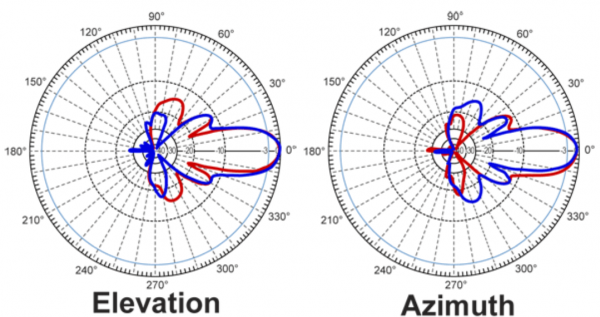
Selecting the Best Antenna
By CWNP On 10/27/2016
This blog covers information on the importance of selecting the best antenna and understanding coverage patterns.
The antenna is the radiating element in any RF system. It is the component that actually causes RF waves to be propagated through free space. The antenna is also the device that receives the RF signals from other transmitters. Antennas come in various forms and result in varied radiation patterns and, therefore, various coverage patterns given the same RF power input. In addition to varied radiating patterns, the design of the antennas impacts the reception of RF signals.
When selecting an antenna, the gain of the antenna and the radiating pattern are key factors, as well as the frequency range for which the antenna is designed. In most AP or bridge implementations today, the antennas should be either 2.4 GHz or 5 GHz antennas. After the appropriate frequency band is identified, you must select the appropriate gain and radiating pattern.
Antenna gain is measured in decibels and is usually listed as dBi today. This metric is achieved by comparing the antenna's gain in the intended radiation direction against that of a theoretical isotropic radiator. The isotropic radiator is a non-existing, theoretical antenna that radiates energy out of the antenna equally in all directions. It is considered spherical, but not such antenna exists. For example, the common antenna included with a consumer-grade wireless AP or router is a 2-3 dBi antenna. This simply means that the antenna has 2-3 dB gain in the direction of intended propagation.
A higher gain antenna (for example, 11 dBi as opposed to 2.14 dBi) will radiate a receivable signal further in the intended direction in free space. Given reflections and other RF behaviors indoors, the signal may not radiate as far at acceptable signal levels as it does in free space, but it will still radiate farther than a lower gain antenna.
For more information on antenna gain and the real meaning behind decibels and signal strength, see the CWNA Official Study Guide.
Now, the final piece to the puzzle is the radiation pattern or simply the antenna pattern. Antenna patterns are most frequently communicated through the use of antenna charts. These charts show the vertical and horizontal radiation patterns of the antenna. The vertical pattern is shown on vertical charts or elevation charts. The horizontal pattern is shown on Azimuth or horizontal charts. It is helpful to remember that the elevation chart shows the radiation pattern of antennas as if you are looking at it from the side and the Azimuth chart shows it as if you are looking down on the top of the antenna (assuming the antenna is vertically upright).
The following images show each chart type:

Using this information, you can more easily select the appropriate antenna and understand the different coverage patterns you can expect from them.
Tagged with: Antenna CWNP CWNA Elevation Azimuth RF Behavior
Blog Disclaimer: The opinions expressed within these blog posts are solely the author’s and do not reflect the opinions and beliefs of the Certitrek, CWNP or its affiliates.



